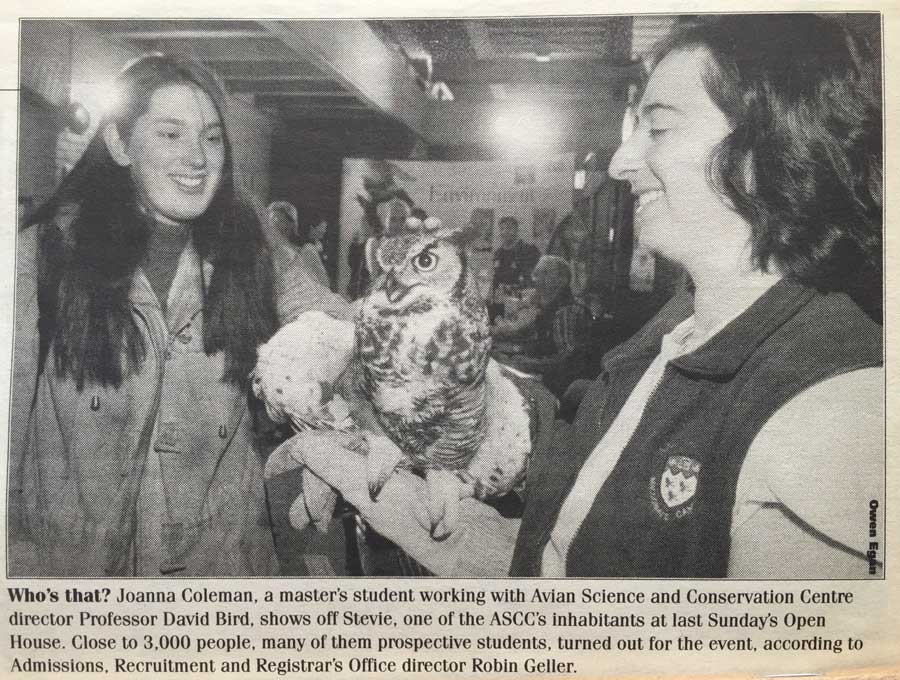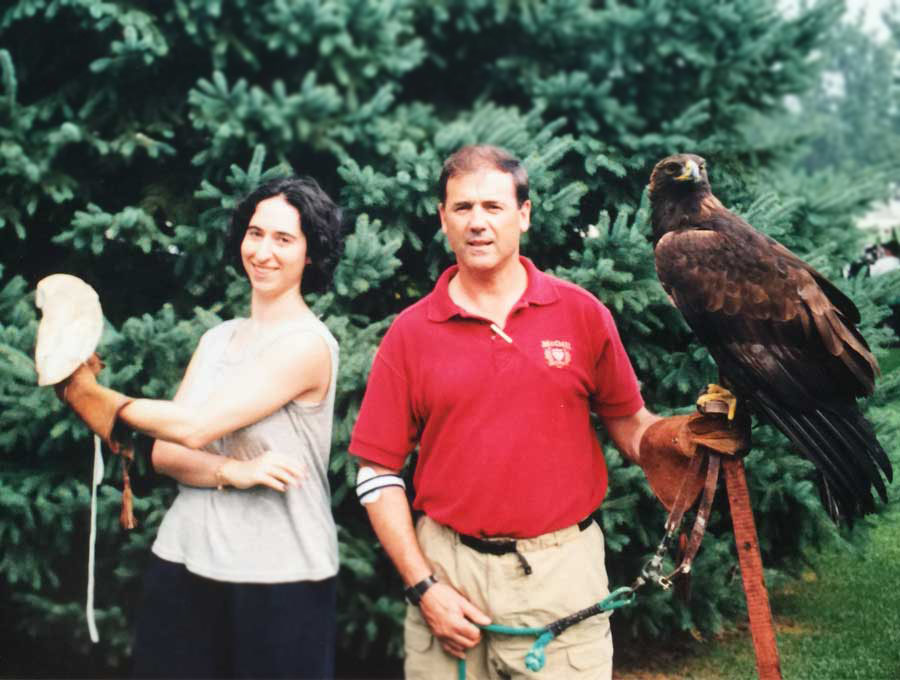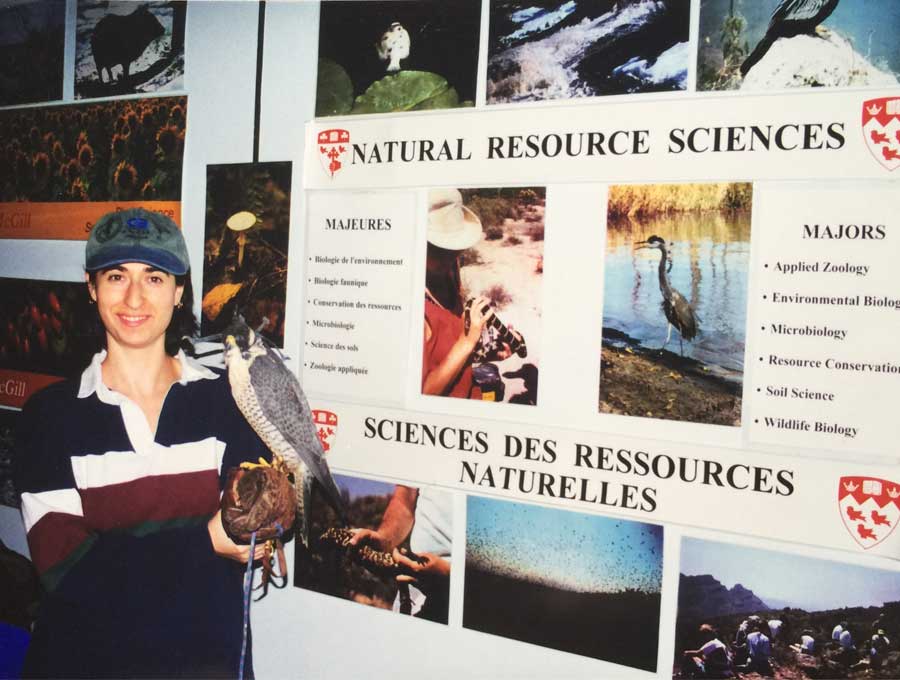I first got involved in outreach in 1997, when I took a summer job that basically gave me free rein to set up and operate an urban wildlife hotline for McGill University – now called the Urban Nature Information Service. This brand new extension activity aimed to take calls from the public and answer their questions about everything from which birds were using their feeders to how to handle human-wildlife conflicts (proposing science-based solutions that were effective, humane and as environmentally benign as possible). I appeared in the media and had a weekly radio show on CKUT. Little did I know outreach would turn into a lasting commitment.
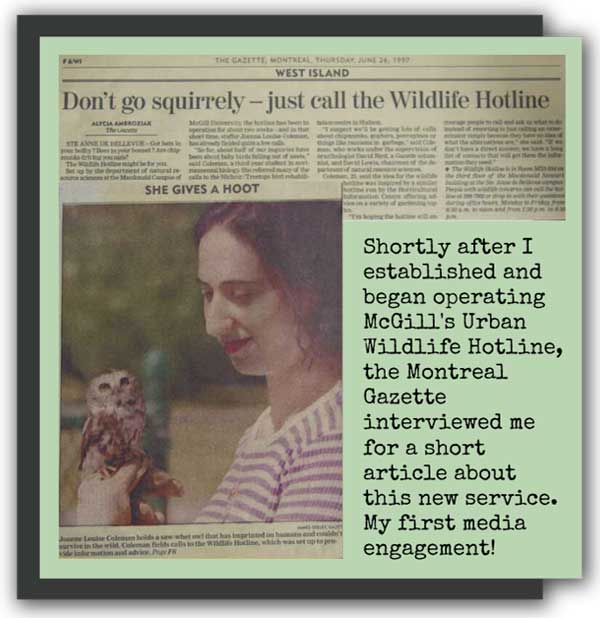
During my MSc, I seized every possible chance to raise awareness of biodiversity, focusing on the ecology and conservation of raptors. I gave talks at schools and community centres, participated in science fairs and appeared on TV and at charity events. Usually, I had my trusty sidekick, Stevie, the great horned owl, another of the Avian Science and Conservation Centre’s peregrine falcons or Sunshine the barn owl – these birds always helped draw a crowd. I saw that letting people get close to, or even touch, wild animals, especially impressive ones like raptors, goes a long way toward getting them to care.
The images below show (left) Stevie and me at MacDonald Campus’ Open House, 2001; (centre) David Bird with female golden eagle and me with Sunshine at the Birdies for Birdies charity golf tournament; (right) me with female peregrine falcon at another outreach event.
Eventually, outreach my full-time gig at the Armand Frappier Museum (AFM), which raises awareness of life sciences in general and microbiology and biotechnology in particular. I coordinated the AFM’s two largest programmes: group visits and summer science camps. Besides delivering content to AFM clientele, I trained all its guides to do so and helped create a new science camp (Environment and Biodiversity). I certainly loved my work but, after two and a half years, I was itching to return to field research.
So, it was time to go for my PhD. Outreach even influenced my choice of supervisor. Robert Barclay, at University of Calgary is recognised for being one of the world’s foremost bat biologists, an award-winning educator and for his commitment to outreach. Indeed, he required all his grad students to do outreach. Perfect. Over my time in Calgary, I engaged with the public about bats and the need to conserve them in all kinds of venues. Again, I found that bringing a live bat to my talks or having people come out for a night of fieldwork was so beneficial. After all, bats being among the world’s most misunderstood and maligned animals, it’s awesome when at the end of an event, the whole audience is exclaiming over how cute and amazing bats are and avowing a desire to protect them.
At this point, I’ve given too many talks to count, including ones tailored to the curricula of primary, secondary and post-secondary schools in Canada and Singapore. As you may imagine, bat talks are pretty popular around Hallowe’en – click here to see one of my local outreach efforts. But I’ve also given talks related to my research on urbanisation and human-Nature relationships – the photo at right is from the Biophilia and Nature Education Symposium in January 2019, organised by Cicada Tree Eco-Place. Naturally, I’ve done many open-house and other outreach events for National University of Singapore and had the honour of being invited to sit on the UN Singapore Women and Climate Change Panel.
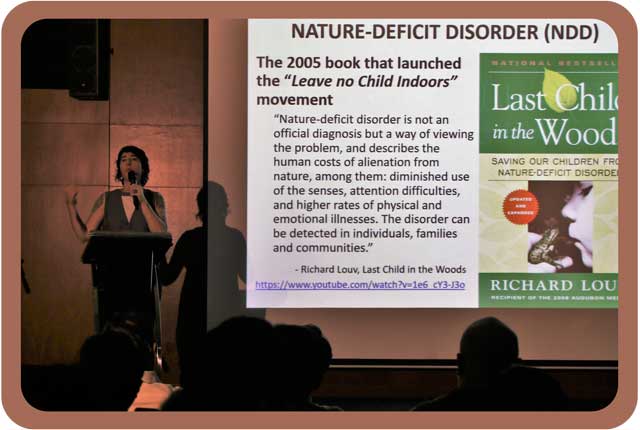
I do all this because what good is it to do ecology and conservation research if we don’t get our message out to the world? So, I have a policy of accepting all outreach requests (as long they do not seek to earn a profit) around the issues of biodiversity, ecology and conservation. Please contact me for details.

